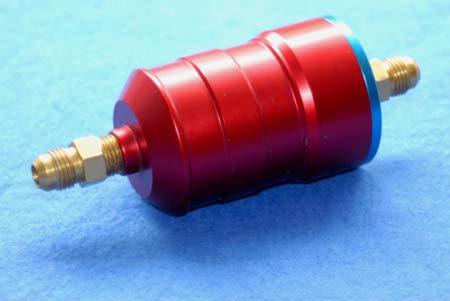Fuel filters
Anyone who has ever dismantled the carburettor (remember them?) of their beloved classic is likely to have noticed, hiding somewhere in the corner at the bottom of the float chamber, a small amount of sediment. Consisting sometimes of quite large granular particles - bits of rust, dirt, sealant or other contaminants - these will have travelled from the fuel tank through some kind of coarse mesh filter past the fuel pump and into the carburettor. Finding their way past the float chamber needle valve, the larger particles will have dropped out while the smaller ones will have been carried away through the fuel jets and into the engine.
But while the older classic weekend racer may tolerate such fuel contaminants, modern fuel injection systems relying on finer tolerances between mating parts most certainly don't. At this point it is important to appreciate that the fuel supply industry goes to extreme lengths to ensure that the fuel delivered to your tank is as contaminant-free as is reasonably possible.
However, fuel transferred from drums to your racer can easily become contaminated, so a critical part of any modern fuel system (and probably advisable on your classic racer as well) is therefore the fuel filter.
Located on the pressure side of the fuel pump, most modern filters including those in race vehicles are installed within the fuel tank whenever possible. Positioned coaxially and around the fuel pump, to save weight and produce a type of canister, the alternative is an inline filter on its own outside the tank and somewhere much closer to the engine fuel injector system. Either way, the design of the filter is such as to present as large a surface area as possible to the flow of the fuel and thereby minimise any pressure loss. Furthermore, having such a large surface area will also minimise the pressure loss over the life of the unit, enabling filters to be 'fit and forget' over the lifetime of the vehicle.

Made from resin-impregnated papers bonded to synthetic fibre layers, the level of filtration depends on the porosity of the paper and the distribution of the pores within it, but for port-injected systems a mean pore size of 10 microns is normally recommended. For directly injected engines, 5 microns is the rule.
When used in gasoline engines, filters can be either spiral-wound around the central support tube or radially from the central support to the outer diameter and then back to the central tube again, forming a system of pleats running radially around the central tube. In the former, the fuel runs from end to end through the filter in a longitudinal direction in line with the intake and outlet flows; in the latter, when the filter core forms more of a star shape, the fuel flows from the outside inwards, depositing its dirt on the outer side of the paper. When fitting inline units, therefore, the direction of flow is critical, and it is important not to get inlet and outlet ports the wrong way round.
The fuel filter may not be the most important component in the fuel system but if you want to protect the more expensive bits then make sure you install one, and make sure it is installed correctly.
Fig. 1 - Typical inline filter used for port-injected fuel systems
Written by John Coxon